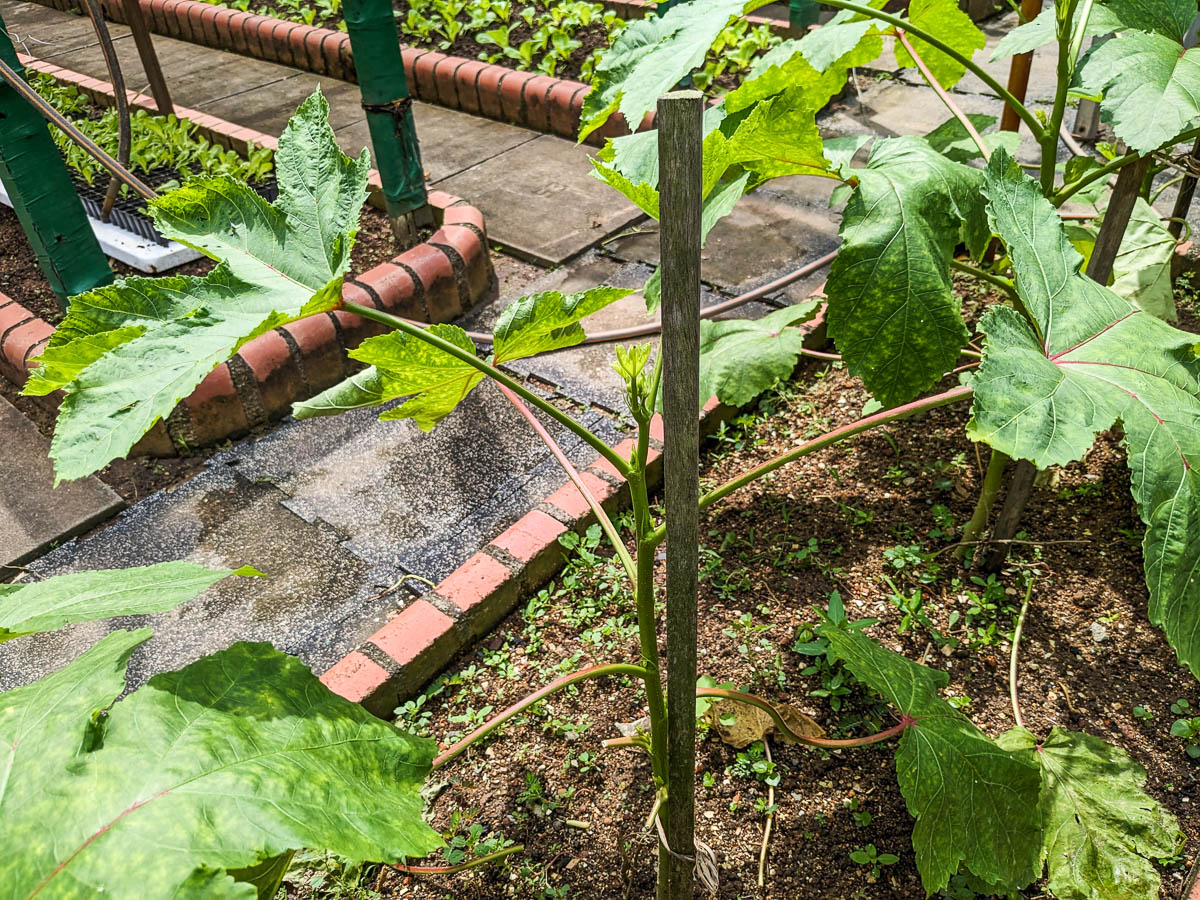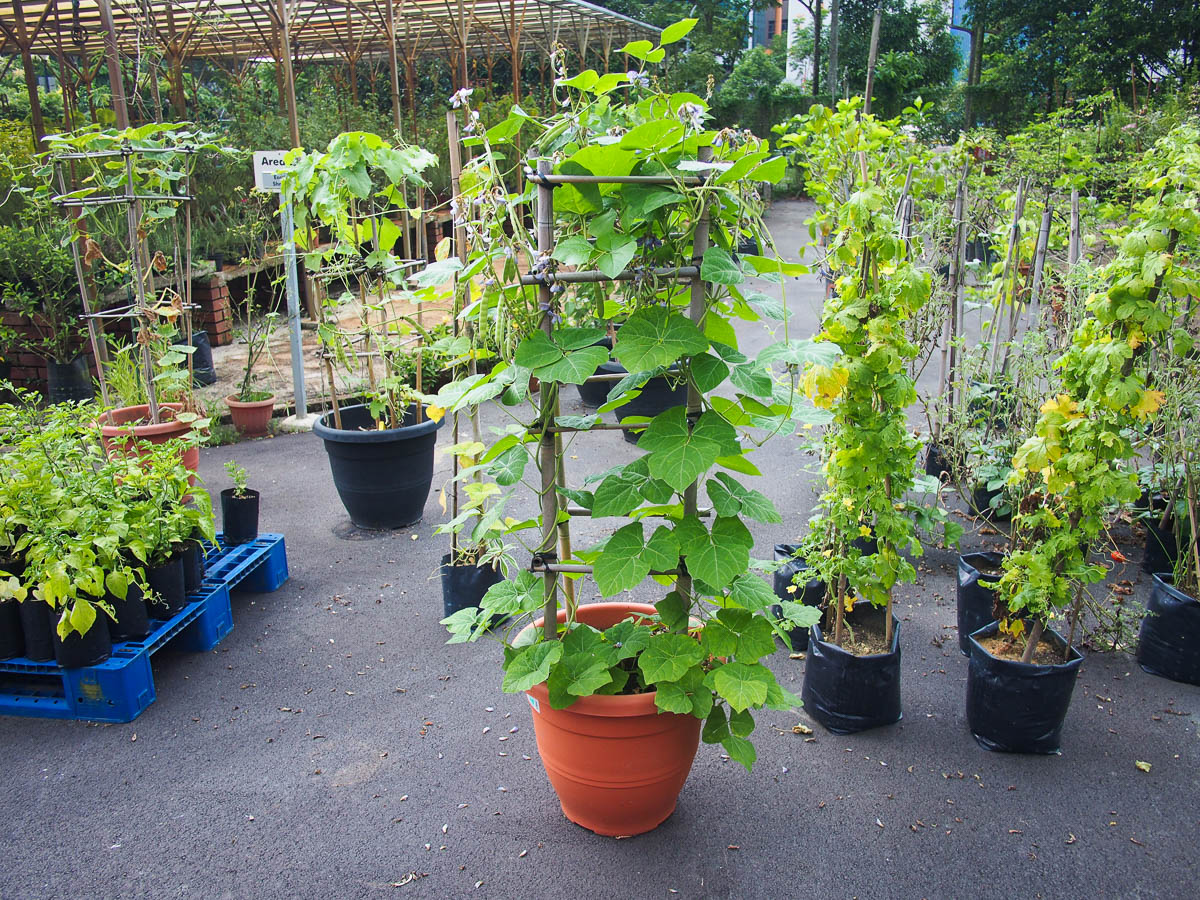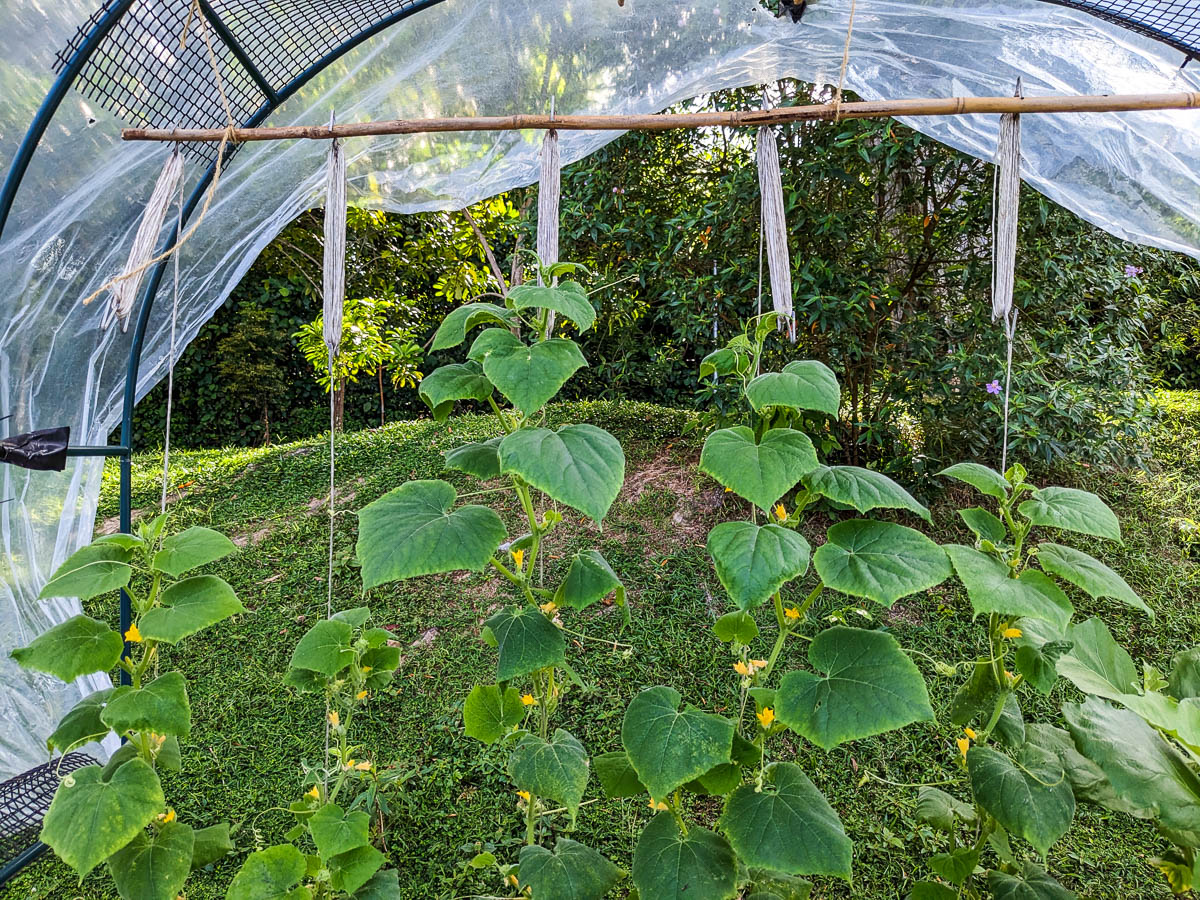Staking

Staking is act of using small support structures to give support to plants, usually climbers, vines, or plants that are tall and unstable. Stakes are different from trellises in that they are usually used to support only one plant, and the plant may not necessarily climb onto the structure like trellises. Staking can be done in various ways with a wide range of materials, but when done properly, it helps your garden plants to look their best and facilitate healthy growth.
Plants lean, topple or flop over for various reasons:
- Some plants have weaker stems due to a floppy growth habit, stunted growth or etiolation
- Heavy rain and strong winds can bend stems or cause them to snap
- Some plants have inflorescences or fruit that are simply too big and heavy
- Overfertilising can sometimes lead to weaker stems
Staking methods

Remedial staking is used to support plants that are already unstable, often due to etiolation, high winds, or accidental mechanical damage. Most remedial stakes are single pieces of wood, bamboo, or plastic, and are driven into the ground next to the plant. Sunflower and Lady’s-Finger are some examples of plants that can become unsteady as they have heavy flowers and fruits, and thus often benefit from remedial staking.

Cage staking is where stakes are arranged around the plant like a cage. This can be done with a single piece of chicken wire, or made from wooden planks or bamboo. This staking method is sometimes also referred to as a square or ring trellis. Cage stakes are good for small growing areas as they keep the plant contained in a column, and are particularly useful for plants in large pots. Indeterminate tomatoes are usually grown in cage stakes.

String staking uses strings tied to a frame to keep plants growing upright. The plant can be continually wrapped around or tied to the string as it grows longer. This method of staking is often used to grow large vines like Cucumber in a small space.

